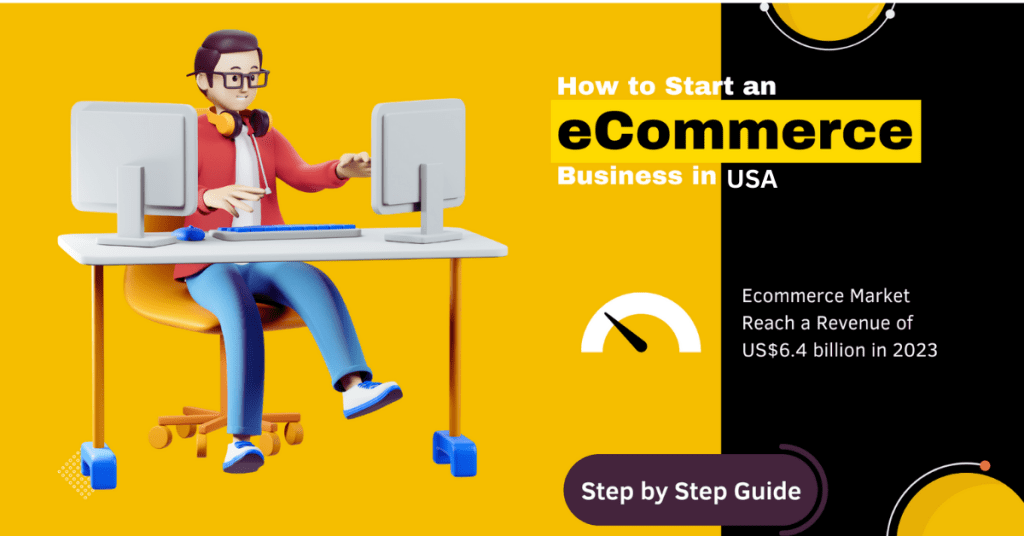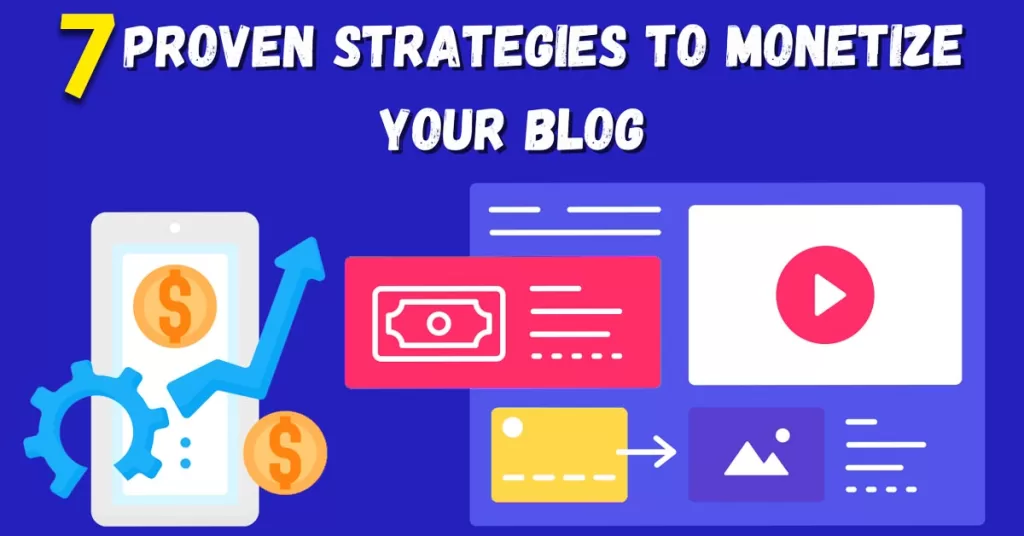Are you eager to delve into the world of Ecommerce in the United States? Discover how to start your Ecommerce journey with this comprehensive guide. Learn how to begin an Ecommerce business in the USA, even without money, from the comfort of your home, and explore successful strategies. Whether you’re interested in launching on Amazon, starting a free Ecommerce venture, or seeking Ecommerce business ideas, we’ve got you covered.
Understanding the Ecommerce Landscape
1. Market Research: Know Your Audience

The first step in starting an Ecommerce business is thorough market research. You need to understand your target audience, their preferences, and their buying habits. Who are your potential customers, and what are they looking for? What are the current trends in the Ecommerce market?
Invest time in studying market reports, conducting surveys, and analyzing competitors. This knowledge will be the foundation of your business strategy.
2. Selecting Your Niche and Products

Once you have a clear understanding of the market, it’s time to choose your niche and the products you’ll sell. Your niche should align with your passion and expertise. What are you enthusiastic about, and what products or services resonate with your interests?
Consider the demand for your chosen niche. Is there a target market for your products or services? Will you be offering physical products, digital downloads, or services? Your product selection is a critical decision that will shape your business.
3. Business Model and Strategy

With your niche and products defined, you’ll need to decide on your business model. Are you dropshipping, manufacturing your own products, or offering a unique service? Consider your pricing strategy, revenue model, and how you’ll position your brand in the market.
Getting Started Legally
4. Business Structure: Choose Wisely

Selecting the right legal structure for your business is crucial. Common options include Limited Liability Companies (LLCs), corporations, partnerships, and sole proprietorships. Each has its advantages and disadvantages in terms of liability, taxation, and administrative requirements.
Consult with a legal expert to determine the most suitable structure for your Ecommerce venture. This choice will impact your business’s legal and financial aspects, so it’s essential to get it right.
5. Register Your Business

Registering your business is a necessary step to operate legally in the USA. Depending on your chosen legal structure and location, you may need to register with your state’s Secretary of State office or other relevant authorities.
6. Obtain an EIN

An Employer Identification Number (EIN) is like a social security number for your business. It’s used for tax purposes and separating your business finances from your personal ones. Obtaining an EIN is typically free and can be done online through the Internal Revenue Service (IRS).
7. Licensing and Permits
Most Ecommerce businesses in the USA require various licenses and permits to operate legally. These may include general business licenses, sales tax permits, and specific industry permits. The requirements can vary by state and locality, so research and ensure you have the necessary licenses in place.
Setting Up Your Ecommerce Platform
8. Choose Your Ecommerce Platform
Selecting the right Ecommerce platform is a pivotal decision. Popular options include Shopify, WooCommerce, BigCommerce, and Magento, among others. Your choice will affect your website’s functionality, design, and scalability.
Consider factors such as ease of use, customization options, payment processing, and support when making your selection.
9. Design and Build Your Website
Your Ecommerce website is your storefront in the digital world. It should be visually appealing, easy to navigate, and optimized for user experience. If you’re not proficient in web design, consider hiring a professional or using website builders that offer Ecommerce templates.
Ensure your website is mobile-friendly, as a significant portion of online shopping happens on mobile devices.
10. Set Up Payment Processing
Ecommerce businesses rely on secure and efficient payment processing. Choose a payment gateway that aligns with your platform and offers a seamless checkout experience for customers. Security is paramount when handling customer payment information, so select a reputable payment solution.
Sourcing Products and Inventory Management
11. Product Sourcing
Depending on your business model, you’ll need to source products or create your own. Consider factors such as suppliers, inventory management, and shipping logistics. If you’re dropshipping, research reliable suppliers who can fulfill orders promptly and consistently.
12. Inventory Management
Efficient inventory management is essential to prevent stockouts or overstocking. Implement inventory tracking systems to monitor stock levels and reorder products as needed. This ensures you can fulfill customer orders promptly and maintain a positive reputation.
Creating a Marketing Strategy
13. Marketing Plan
A well-thought-out marketing plan is your roadmap to success. Identify your target audience and tailor your marketing efforts to reach them effectively. Consider a mix of digital marketing channels, including search engine optimization (SEO), social media marketing, email marketing, and pay-per-click advertising.
14. Content Marketing
Content is king in the digital world. Create valuable and engaging content that resonates with your audience. Blog posts, product descriptions, and educational content can help drive traffic to your website and convert visitors into customers.
Managing Your Ecommerce Business
15. Customer Service
Exceptional customer service is a hallmark of successful Ecommerce businesses. Respond promptly to customer inquiries, address concerns, and provide support when needed. Happy customers are more likely to return and refer others to your store.
16. Analytics and Data Analysis
Use analytics tools to track website traffic, sales, and customer behavior. Analyzing data can provide insights into what’s working and what needs improvement. Make data-driven decisions to optimize your Ecommerce operations continually.
Scaling Your Ecommerce Business
17. Expansion Strategies
Consider strategies for expanding your Ecommerce business. This could involve entering new markets, adding product lines, or exploring international sales opportunities. Continuously seek avenues for growth to maximize your business’s potential.
Much like how a professional WordPress blog website can be a powerful online presence, starting an Ecommerce business in the USA offers you the opportunity to reach a wide audience and grow your online brand.
Final Thoughts
Starting and running an Ecommerce business in the USA can be a rewarding endeavor. However, it requires careful planning, dedication, and a commitment to delivering value to your customers. Remember that success may not come overnight, but with persistence and the right strategies, you can build a thriving Ecommerce business that stands the test of time.
Contact Open a European Company for expert assistance and personalized advice on starting and growing your Ecommerce business.
Frequently Asked Questions:
Is E-Commerce profitable in the USA?
E-Commerce can be highly profitable in the USA, given its robust digital infrastructure and a large consumer base. However, success depends on various factors, including market research, product selection, marketing strategy, and customer engagement. Many Ecommerce businesses in the USA have thrived, but it requires careful planning and execution to be profitable.
Which US state is best for Ecommerce?
There isn’t a single “best” state for Ecommerce, as the choice depends on your specific business needs. States like California and New York have large consumer markets, while states like Delaware offer business-friendly regulations. Consider factors such as target audience, tax laws, and business climate when choosing your location.
What are the 4 types of e-commerce?
The four primary types of Ecommerce are:
– B2C (Business to Consumer): Businesses sell products or services directly to individual consumers.
– B2B (Business to Business): Businesses sell products or services to other businesses.
– C2C (Consumer to Consumer): Individuals sell products or services to other individuals through online platforms.
– C2B (Consumer to Business): Individuals offer products or services to businesses, such as freelancers or influencers.
Which is the richest e-commerce?
Amazon is one of the richest and most successful Ecommerce companies globally. It has a dominant position in the market, offering a wide range of products and services, from retail to cloud computing. Other major players include Alibaba, Walmart, and eBay.
Is it free to start Ecommerce?
While it’s possible to start a basic Ecommerce venture with minimal upfront costs, running a successful Ecommerce business typically involves expenses. You’ll need to budget for website development, product sourcing, marketing, and potentially hiring employees. It’s important to be prepared for both initial and ongoing expenses.
Is it easy to start E-commerce?
Starting an Ecommerce business can be relatively straightforward, but it’s not necessarily easy. The ease of starting depends on factors such as your experience, market knowledge, and the complexity of your business model. To increase your chances of success, thorough planning and a solid understanding of Ecommerce principles are essential.
How can I be successful in Ecommerce?
Achieving success in Ecommerce requires a combination of factors:
– Conduct thorough market research to identify profitable niches.
– Choose high-demand products or services.
– Create an attractive, user-friendly website.
– Develop a robust marketing strategy.
– Provide excellent customer service.
– Continuously analyze and adapt to market trends.
– Build strong relationships with suppliers.
– Monitor and manage your finances effectively.
Is E-commerce legal in the USA?
Yes, Ecommerce is legal in the USA. However, it is subject to various federal, state, and local regulations. These regulations cover areas such as online privacy, consumer protection, taxation, and intellectual property rights. It’s essential to ensure compliance with all relevant laws when operating an Ecommerce business.
What industry sells the most in Ecommerce?
The industry that sells the most in Ecommerce can vary over time. Traditionally, categories like electronics, fashion, and home goods have been popular. However, the COVID-19 pandemic accelerated the growth of online sales across many sectors, including groceries, health, and wellness products, and digital services.
What is the B2B model in Ecommerce?
The B2B (Business to Business) model in Ecommerce involves businesses selling products or services to other businesses. It often includes bulk orders, negotiations, and long-term contracts. B2B Ecommerce platforms facilitate transactions between businesses, making it more efficient for procurement and supply chain management.
Feel free to use these FAQs as a resource for your Ecommerce guide or website, and let me know if you need any further assistance!





